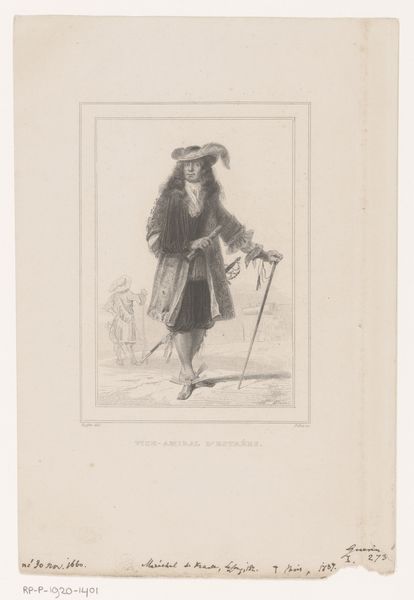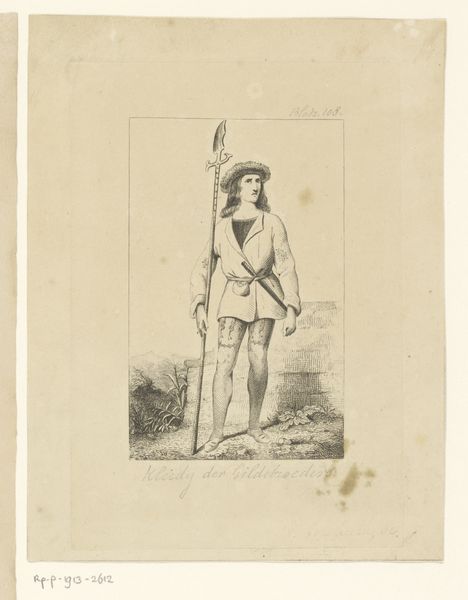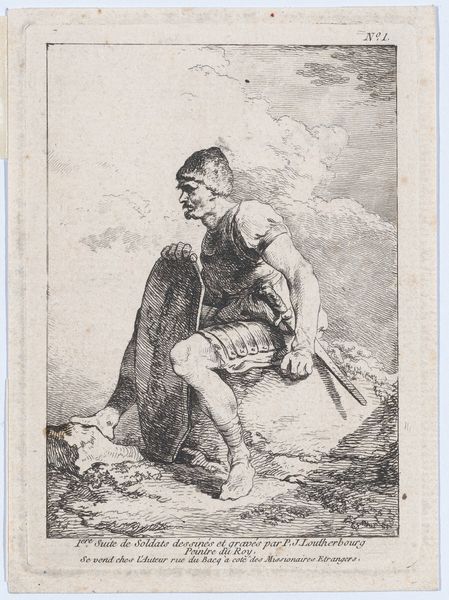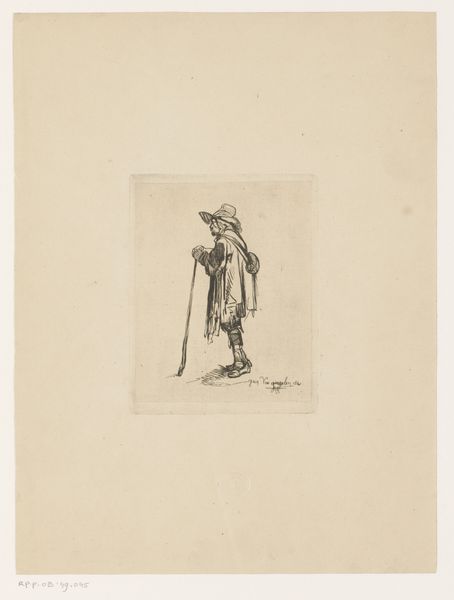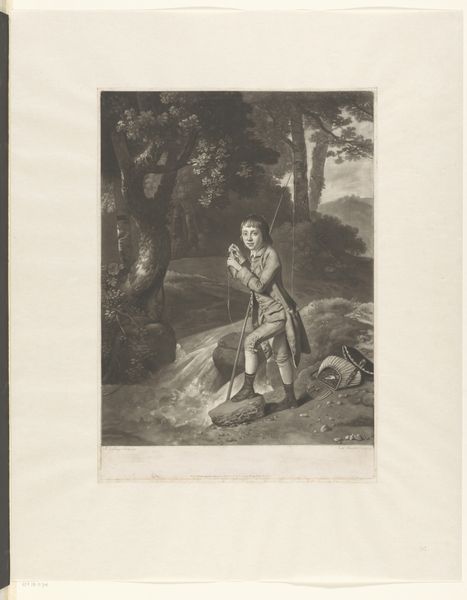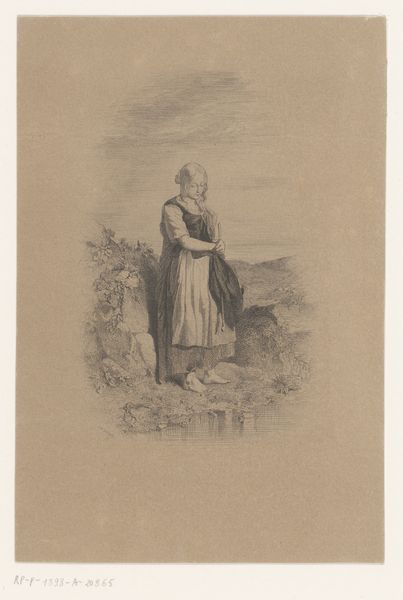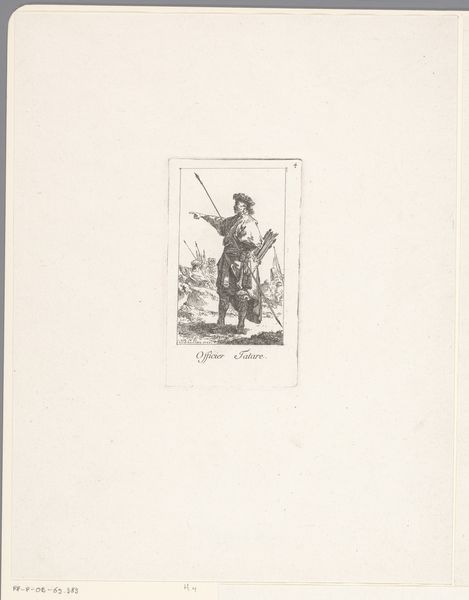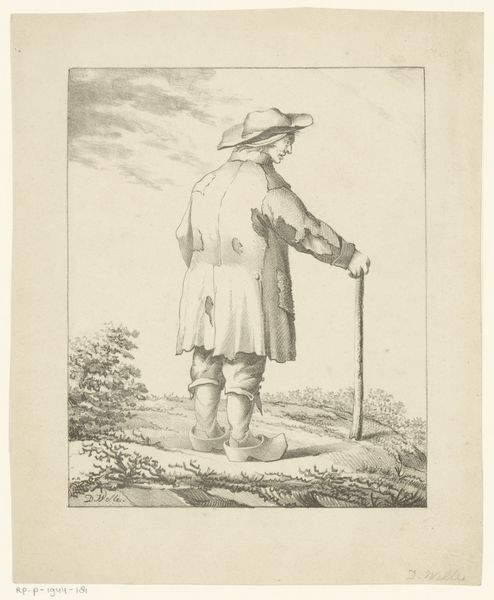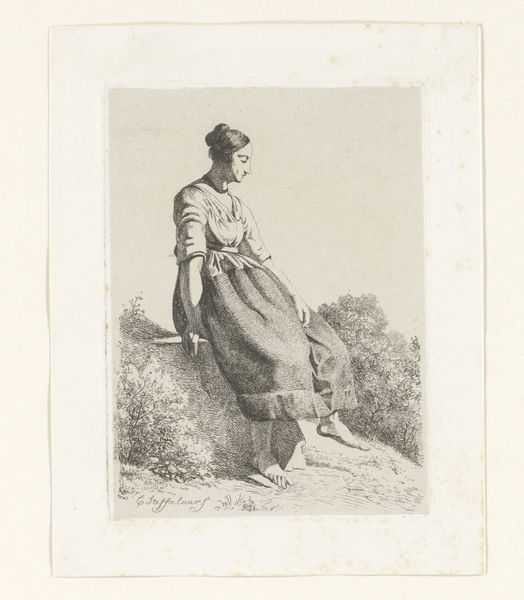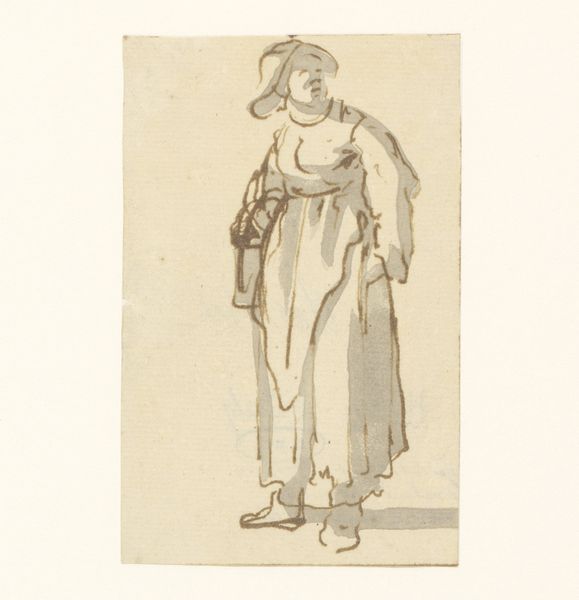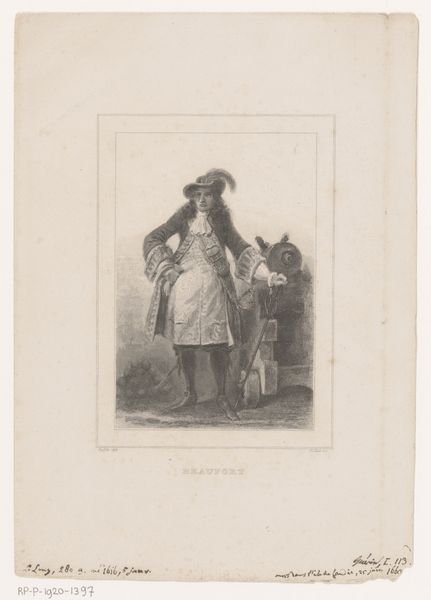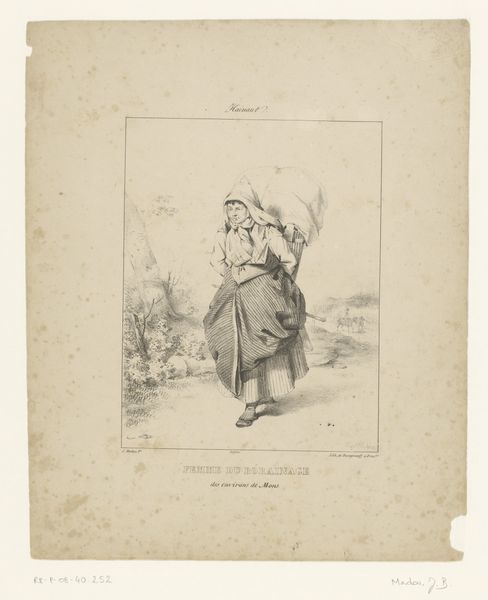
print, engraving
#
portrait
# print
#
figuration
#
romanticism
#
engraving
Dimensions: height 186 mm, width 126 mm
Copyright: Rijks Museum: Open Domain
Curator: Pierre Jean-Baptiste van Reeth created this engraving, "Gildebroeder met zwaard," in 1846, which translates to "Guild Brother with Sword." It depicts a young man in what appears to be historical garb. What's your first impression? Editor: Immediately, I notice the restrained color palette—the dominance of greyscale emphasizes the texture and linework, it projects a somber, perhaps nostalgic, mood. Curator: Indeed. This piece exists within a period of intense national self-reflection and a surge of Romanticism across Europe. This portrayal can be seen as an assertion of identity amid burgeoning European nationalism. Consider the historical context: Belgium gained independence just 16 years before. How does the artwork address the themes of identity or brotherhood in a modernizing country? Editor: It is subtle, not idealized. The guild brother's garb appears practical, functional—not ostentatious. Note the detailed shading that gives weight to his stance and costume. This detailed attention speaks to something solid, something authentic, which reinforces his position within this constructed fraternity. Curator: And the choice to portray him as a guild member wielding a sword connects the tradition of civic responsibility to a more martial past, underscoring not only the peaceful crafts but also a preparedness for self-defense. The print offered to its contemporary public a way to affirm traditional values at a time of great socio-economic transition. How does this resonate within contemporary sociopolitical movements of identity reclamation and perhaps a search for a more community-based experience? Editor: Thinking of contemporary applications—perhaps a longing for simpler forms of association outside the complexities of modernity and technology. It evokes a connection between the visible world and an invisible structure of social bonds, offering us both a glimpse of that fraternity and a mystery that stimulates the imagination. Curator: Yes, absolutely. Its restrained representation also reveals the complexity of the period: tradition refigured for an uncertain time. It serves as both a historical record and an ongoing invitation to imagine societal solidarity and responsibility. Editor: A fine analysis; it goes to show how enduring aesthetic simplicity, skillfully employed, can encapsulate layers of complex meanings over time.
Comments
No comments
Be the first to comment and join the conversation on the ultimate creative platform.
